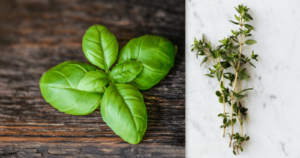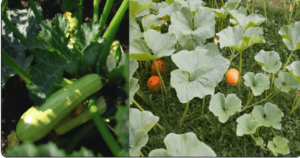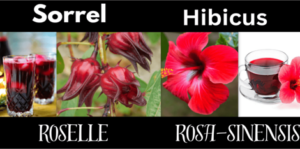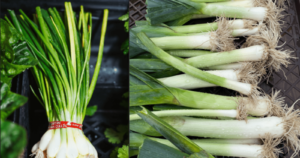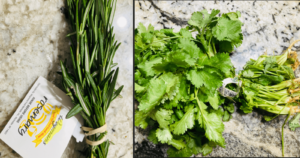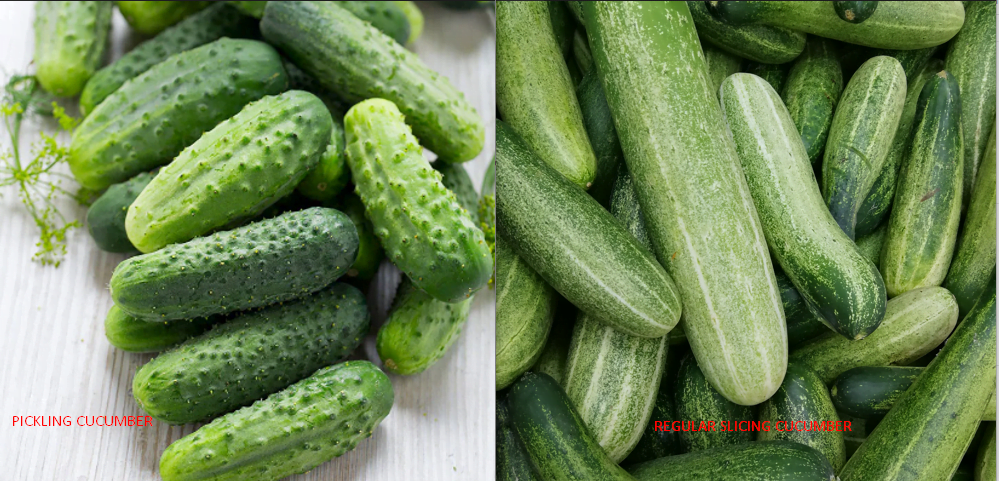Dill it has feathery green leaves and small yellow flowers, Chive have long, thin green stems that resemble small grass blades. Dill is slightly tangy flavor with a hint of anise (licorice-like) taste. Chives have a mild, onion-like flavor.
Dill a Mediterranean native has found its way into kitchens worldwide, where it is often employed to infuse pickles, salads, fish, sauces, and soups with its aromatic charm. Beyond its culinary applications, dill is esteemed for its potential digestive benefits and various health properties. On the other hand, chives, slender and hollow-stemmed members of the onion family, impart a subtle yet unmistakable onion-like taste. Originating from Europe and Asia, they have become staples in global cuisine.
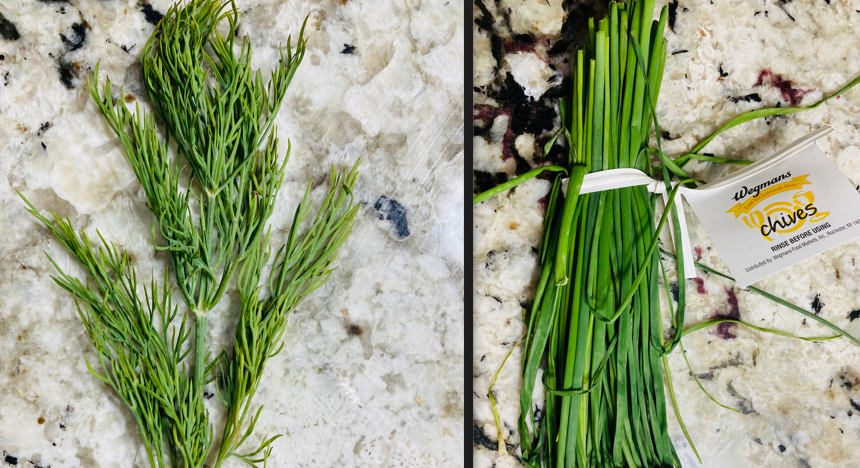
Chives, commonly used as a garnish or to provide a delicate onion flavor, are cherished in dishes like salads, omelets, sauces, and as a finishing touch for baked potatoes or soups. Both dill and chive, whether used fresh or dried, contribute a burst of flavor and a touch of elegance to a wide array of dishes, making them indispensable components in the culinary world.
5 Differences Between Dill vs Chive
- Dill is an herb with feathery, fern-like leaves.
- Dill has a mild, slightly tangy flavor with hints of anise.
- Dill is commonly used in pickling, seafood dishes, and sauces.
- Dill leaves are typically used fresh or dried.
- Dill plants can grow quite tall, reaching up to 3 feet in height
- Chive is an herb with long, thin, hollow green stems.
- Chive has a mild onion-like flavor.
- chive is often used as a garnish or in salads, soups, and Omelettes
- Chives are usually used fresh, as their flavor diminishes when dried.
- Chive plants are shorter, usually around 12-18 inches in height.
Dill’s, Characteristic of its flavor
It belongs to the Apiaceae family, which also includes carrots, celery, and parsley. The name “dill” means to “calm or soothe,” and most likely originates from the plant’s known ability to calm troubled stomachs
and colicky infants. A native to Southern Russia, Western Africa, and the Mediterranean region, and it has been used for culinary and medicinal purposes for centuries.
Dill known for its feathery, fine fern-like leaves. These leaves are bright green and arranged in clusters, giving the plant an airy and lacy appearance. When dill matures, it produces small clusters of yellow flowers that add a touch of vibrancy to the plant. These flowers are made up of tiny individual blossoms and are typically arranged in umbrella-like clusters called umbels. The combination of the finely divided leaves and the small yellow flowers gives dill a unique and attractive appearance.

The flavor of dill is characterized by a combination of several key elements:
- Aromatic: Dill is highly aromatic, releasing a pleasant and slightly sweet fragrance when crushed or chopped. This aroma is a key component of its overall flavor profile.
- Herbaceous: Dill imparts a fresh, herbaceous quality to dishes. This characteristic is akin to other herbs like parsley and cilantro.
- Anise-like: Dill has a mild anise or licorice-like flavor. This is due to the presence of a compound called anethole, which is also found in anise seeds and fennel. This anise-like quality is more pronounced in the seeds of the dill plant.
- Citrusy: Dill also has a subtle citrus undertone, providing a hint of brightness to its flavor profile. This citrusy note complements the herb’s overall profile and adds a touch of freshness.
- Mildly Bitter: While dill is primarily known for its sweetness and herbaceousness, it can also have a mild bitterness, especially in its seeds. This bitterness is generally not overpowering and serves to balance out the other flavors.
- Cooling Sensation: Some people describe dill as having a slight cooling sensation, similar to mint or menthol. This attribute can be particularly noticeable when dill is consumed raw.
- Complementary: Dill is often used to enhance the flavors of other ingredients rather than dominate them. It pairs well with a wide range of foods, including fish, potatoes, cucumbers, eggs, and various vegetables.
- Freshness Enhancer: Dill is often used to add a burst of freshness to dishes. It can brighten up the flavor profile of salads, sauces, dressings, and marinades.
- Versatile: Dill can be used in both savory and sweet dishes, though it is most commonly associated with savory applications. It is a key ingredient in dishes like pickles, dill sauce, potato salad, and various types of seafood dishes.
- Varied Intensity: The intensity of dill’s flavor can vary depending on factors like the freshness of the herb, the part of the plant being used (leaves or seeds), and how it is prepared (fresh, dried, or cooked).
Overall, dill’s unique flavor profile makes it a versatile and widely appreciated herb in many cuisines around the world. It adds depth and complexity to dishes while imparting a fresh and aromatic quality that enhances the overall dining experience.
Basic Chive Characteristics of its flavor
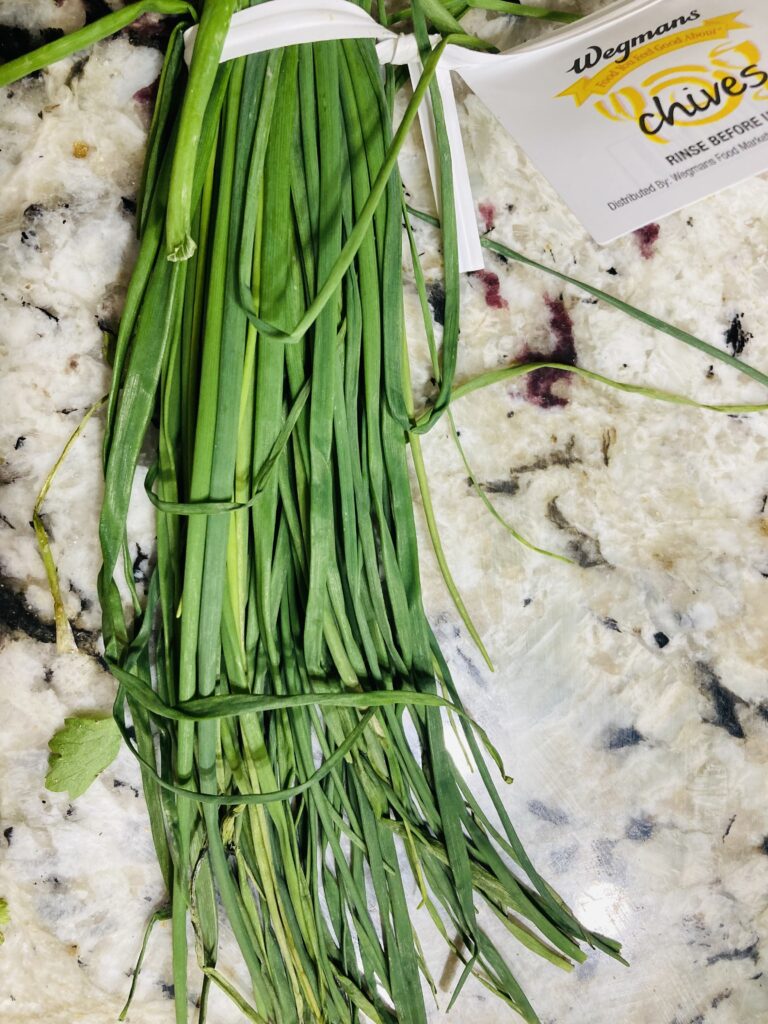
Chives are a type of herb that belong to the Allium family, which also includes garlic, onions, and leeks. They are known for their mild onion-like flavor with a hint of garlic. Here are some details about the flavor profile of chives:
- Mild Onion Flavor: Chives have a mild onion flavor that is much milder compared to other members of the Allium family like onions or garlic. This makes them suitable for adding a subtle onion taste to dishes without overpowering the other flavors.
- Hint of Garlic: Chives also have a subtle hint of garlic in their flavor profile. This makes them a versatile herb that can be used in a variety of dishes where a combination of mild onion and garlic flavors is desired.
- Fresh and Grass-Like: Chives have a fresh and grass-like quality to their flavor, which adds a bright and lively element to dishes. This makes them a popular choice for garnishing and finishing touches on various dishes.
- Herbaceous and Delicate: The flavor of chives is herbaceous, meaning it has a green, leafy quality. It’s delicate compared to stronger herbs like rosemary or thyme, making it suitable for dishes where a more subtle herbal note is desired.
- Versatile: Chives are incredibly versatile and can be used in a wide range of dishes. They are commonly used as a garnish for salads, baked potatoes, soups, and omelettes. They can also be used in dips, sauces, and various savory dishes to add a mild onion-garlic flavor.
Essential authentic Taste and smell of Dill vs Chive
Dill:
- Taste: Dill has a delicate, herbaceous taste with a mild tanginess. It is often described as refreshing and slightly sweet, with subtle notes of anise or licorice.
- Smell: The aroma of dill is fresh and herbal, with distinct hints of anise. It can be quite aromatic, especially when the leaves are crushed or chopped.
Chive:
- Taste: Chives have a mild, onion-like flavor with a gentle garlicky undertone. The taste is not as pungent as regular onions or garlic, making them a milder option for adding flavor to dishes.
- Smell: The smell of chives is reminiscent of green onions, with a fresh, grassy aroma. There’s also a subtle hint of garlic in the scent.
Both dill and chive offer unique and complementary flavors to various dishes, and they are often used to enhance the overall taste and aroma of a wide range of culinary creations.
8 Culinary use of Dill
- Pickling: Dill is perhaps most famously known for its role in pickling, especially cucumbers. The feathery leaves and seeds of the dill plant are used to flavor the brine in which cucumbers (and sometimes other vegetables) are preserved. This imparts a distinctive tangy and aromatic flavor to pickles.
- Seafood: Dill pairs exceptionally well with fish, particularly salmon. Its fresh, slightly sweet, and slightly tangy flavor complements the rich, buttery taste of salmon. Dill is often used in recipes for baked, grilled, or poached salmon. It can be used as a rub, a topping, or as an ingredient in sauces.
- Salads and Dressings: Dill adds a bright and zesty flavor to salads, both green salads and salads made with other ingredients like potatoes, cucumbers, or beets. It’s also a popular herb in salad dressings, offering a refreshing and aromatic element.
- Sauces and Condiments: Dill is a key ingredient in various sauces, such as dill sauce or dill cream sauce. These sauces can be used to enhance the flavor of fish, chicken, or vegetables. Dill may also be used in mayonnaise-based dressings for sandwiches or as a dip for vegetables.
- Vegetables: Dill pairs well with a variety of vegetables. It complements the earthy sweetness of carrots and adds a fresh note to dishes featuring potatoes. Dill can be used in dishes like potato salads, roasted carrots, and even in mashed potatoes.
- Soups and Stews: Dill can be used to flavor soups and stews, particularly those with a creamy or dairy-based broth. It can add a bright, herbaceous note that balances out the richness of the soup.
- Breads and Pastries: In some cuisines, dill is used to flavor breads and pastries. It can be incorporated into the dough or sprinkled on top before baking, adding a unique twist to baked goods.
- Infusions and Oils: Dill can also be used to infuse oils and vinegars, imparting its flavor for later use. Dill-infused oils can be drizzled over salads or used in cooking for an extra burst of flavor.
Remember, when using dill, it’s best to add it towards the end of cooking or just before serving to preserve its fresh flavor, as heat can diminish its aromatic qualities. Additionally, dill is a versatile herb that can be used in both fresh and dried forms, though fresh dill generally has a more vibrant flavor.
Cultivation of Dill and Chive
Dill (Anethum graveolens):
- Soil Requirements: Dill prefers well-drained soil that is moderately rich in organic matter. It can tolerate a slightly acidic to slightly alkaline soil pH range of around 5.5 to 6.5.
- Sunlight: Dill thrives in full sun, which means it needs at least 6 to 8 hours of direct sunlight per day.
- Watering: While dill prefers well-drained soil, it’s important to keep it consistently moist. Water the plants regularly, especially during dry spells, but avoid waterlogging.
- Spacing: When planting dill, space the seeds or seedlings about 12 to 18 inches apart. This allows enough room for the plants to grow without overcrowding.
- Feeding: Dill is not a heavy feeder, but it can benefit from a balanced, all-purpose fertilizer applied according to the manufacturer’s instructions.
- Harvesting: Dill leaves can be harvested once the plants reach a height of about 12 inches. You can snip the leaves as needed for culinary use. The seeds are typically ready for harvest when they turn brown and become firm.
Chive (Allium schoenoprasum):
- Soil Requirements: Chives are not as picky about soil as some other herbs, but they do best in well-drained, fertile soil. They can tolerate a wider range of soil pH levels.
- Sunlight: Chives prefer full sun but can tolerate partial shade. They will still grow reasonably well with 4 to 6 hours of direct sunlight per day.
- Watering: Chives like consistently moist soil. Water them regularly, especially during dry spells. Be careful not to let the soil become waterlogged.
- Spacing: When planting chive seedlings, space them about 8 to 12 inches apart. This allows enough space for the plants to grow and spread.
- Feeding: Chives are not heavy feeders, but they can benefit from a balanced, all-purpose fertilizer applied according to the manufacturer’s instructions.
- Harvesting: Chive leaves can be harvested once the plants reach a height of about 6 inches. Use a pair of scissors or garden shears to snip the leaves. Avoid cutting more than one-third of the plant at a time to allow it to continue growing.
- Perennial Care: Chives are perennial, which means they can come back year after year. In colder climates, they may die back in winter but will usually re-emerge in the spring. They benefit from a light layer of mulch to protect their roots during winter.
Both dill and chive plants are relatively easy to grow and can be a wonderful addition to your garden or herb collection.
Key Health benefits of Dill
known for its potential health benefits. Here are some of the potential health benefits of dill:
- Nutrient-Rich: Dill is a good source of vitamins and minerals, including vitamin C, vitamin A, manganese, and iron. These nutrients play important roles in various bodily functions.
- Digestive Health: Dill has been traditionally used to aid digestion. It contains compounds that may help relax the digestive tract and reduce bloating, gas, and indigestion.
- Antioxidant Properties: Dill contains various antioxidants, including flavonoids, that help neutralize harmful free radicals in the body. This may contribute to overall cellular health and reduce the risk of chronic diseases.
- Anti-inflammatory Effects: Some compounds in dill, such as urinary tract disorders, infections, monoterpenes and flavonoids, have anti-inflammatory properties. This can be beneficial in reducing inflammation in the body, which is associated with various chronic diseases.
- Bone Health: Dill is a source of calcium, which is essential for maintaining healthy bones and teeth. It also contains other minerals like magnesium, which are important for bone health.
- Cancer Prevention: Some studies suggest that the compounds in dill may have anti-cancer properties. However, more research is needed in this area to establish a definitive link.
- Immune System Support: The vitamin C content in dill can boost the immune system by stimulating the production of white blood cells and supporting their function.
- Respiratory Health: Dill has been used in traditional medicine for its potential respiratory benefits. It may help clear congestion and soothe coughs.
- Menstrual Health: Dill contains compounds that may help regulate menstrual cycles and reduce cramps associated with menstruation.
- Antimicrobial Properties: Dill has shown some antimicrobial properties against certain bacteria and fungi, which may help in fighting infections.
- Weight Management: Dill is low in calories and can be a flavorful addition to meals, making it a good choice for those looking to manage their weight.
It’s important to note that while dill can be a nutritious addition to a balanced diet, it should not be relied upon as a sole source of nutrients or used as a substitute for medical treatment. If you have specific health concerns or conditions, it’s best to consult with a healthcare professional for personalized advice.
10 important Health benefits Chive
They are known for their mild, onion-like flavor and are commonly used to add a subtle, savory taste to various dishes. In addition to their culinary uses, chives offer several potential health benefits:
- Rich in Nutrients: Chives are a good source of essential nutrients like vitamins (such as vitamin K, vitamin C, vitamin A), minerals (such as calcium, potassium, and iron), and antioxidants.
- Antioxidant Properties: Chives contain various antioxidants, including quercetin, kaempferol, and allicin. These compounds help protect cells from damage caused by free radicals, which are unstable molecules that can contribute to chronic diseases and aging.
- Anti-Inflammatory Effects: Some studies suggest that the compounds in chives may have anti-inflammatory properties. This could be beneficial for reducing inflammation in the body, which is linked to various chronic conditions.
- Supports Digestive Health: Chives contain dietary fiber, which is important for maintaining a healthy digestive system. Fiber helps regulate bowel movements and may also contribute to a healthier gut microbiome.
- May Boost Immune Function: Chives are a good source of vitamin C, which is known to support the immune system. Vitamin C is an important antioxidant that helps protect cells from damage and supports the production of collagen, a protein necessary for skin health.
- May Lower Blood Pressure: Some studies suggest that the sulfur compounds in chives may help lower blood pressure. However, more research is needed to establish a definitive link.
- May Have Anti-Cancer Properties: Some studies have shown that compounds in chives, particularly organosulfur compounds like allicin, may have anti-cancer properties. These compounds have been studied for their potential to inhibit the growth of cancer cells.
- May Help Regulate Blood Sugar: Some research suggests that chives may have a positive effect on blood sugar levels. Compounds in chives may help improve insulin sensitivity, which is important for regulating blood sugar.
- May Aid in Weight Management: Chives are low in calories but rich in flavor, making them a good addition to meals for adding taste without significantly increasing calorie intake.
- May Support Heart Health: Some components in chives, like allicin, have been associated with heart-protective effects. They may help lower cholesterol levels and improve overall heart health.
It’s a good idea to consult with a healthcare professional or registered dietitian, especially if you have specific health concerns or conditions. They can provide personalized advice based on your individual circumstances.
13 Foods that go well with Dill
Dill
- Salmon: Dill and salmon are a classic combination. The fresh, slightly tangy flavor of dill complements the richness of salmon beautifully. It’s often used in dill sauce or as a garnish for grilled or baked salmon.
- Cucumber: Dill and cucumber are a natural pairing. They are commonly combined in dishes like cucumber salad or in sauces like tzatziki.
- Potatoes: Dill can be used to flavor potato dishes. It pairs well with both boiled and roasted potatoes. It’s often used in potato salads or in dishes like dill mashed potatoes.
- Yogurt: Dill can be mixed into yogurt to create a flavorful sauce or dip. This is commonly used in Mediterranean and Middle Eastern cuisine.
- Eggs: Dill can be used to flavor egg dishes like omelets, quiches, or scrambled eggs. It adds a fresh, herbal note to the dish.
- Tomatoes: Dill can complement the flavor of tomatoes in salads or in dishes like tomato and cucumber salad.
- Greek Cuisine: Dill is a staple herb in Greek cuisine. It’s used in dishes like spanakopita (spinach pie), dolmans (stuffed grape leaves), and moussaka (a layered eggplant and meat casserole).
- Smoked Fish: Dill works well with smoked fish like mackerel or trout. It can be used in marinades or as a garnish.
- Pickles: Dill is a key ingredient in dill pickles. It imparts its distinct flavor to the brine and the pickles themselves.
- Creamy Sauces: Dill can be added to creamy sauces, such as a dill cream sauce for pasta or as a component of a creamy salad dressing.
- Soups and Stews: Dill can be used to flavor soups and stews, particularly those with a creamy or dairy base. It pairs well with ingredients like potatoes, carrots, and leeks.
- Grains: Dill can be mixed into dishes with grains like rice or couscous to add a fresh and aromatic element.
- Lentils: Dill can be used to flavor lentil dishes, providing a bright and herbaceous note to the earthy flavors of the lentils.
12 Food that go well with Chive
Here are some foods that go well with chives:
- Potatoes: Chopped chives are a classic addition to baked or mashed potatoes. They add a nice burst of flavor.
- Eggs: Chives can be sprinkled on scrambled eggs, omelets, or even deviled eggs for a subtle oniony kick.
- Cream Cheese: Mixing chives with cream cheese makes a delicious spread for bagels or crackers.
- Salads: Chives can be used as a garnish for salads, particularly those with a creamy dressing.
- Soups and Stews: Adding chives to soups and stews right before serving can give them a fresh, aromatic lift.
- Fish and Seafood: Chives pair well with fish and seafood dishes, providing a nice contrast to their flavors.
- Creamy Sauces: Chives can be stirred into creamy sauces for pasta or used as a finishing touch for dishes like chicken alfredo.
- Grilled Meats: Chopped chives can be used to garnish grilled meats like steak, chicken, or pork.
- Sour Cream: Mixing chives into sour cream creates a flavorful dip for chips or veggies.
- Rice and Grains: Chopped chives can be mixed into cooked rice or grains for added flavor.
- Sandwiches: Chives can be used to add a fresh, aromatic element to sandwiches, especially those with cream cheese, smoked salmon, or egg fillings.
- Pizza: Sprinkling chives over a pizza, especially one with creamy sauces or white cheeses, can be a tasty addition.
Remember, chives are best used fresh and added towards the end of cooking to preserve their flavor. They can also be used as a garnish for a visually appealing touch.
Important tips how to Store Fresh Dill and dried dill
Dill and chives are both popular herbs used in cooking to add flavor and aroma to various dishes. Here are some details about storing both fresh and dried dill and chives:
Fresh Dill:
- Refrigeration: Fresh dill should be stored in the refrigerator. To extend its freshness, you can treat it like a bouquet of flowers. Trim the ends of the stems and place it in a glass with a little water. Cover the dill loosely with a plastic bag and secure it with a rubber band. Change the water every few days.
- Moisture Control: Dill is a delicate herb and can wilt quickly. Keeping it in a moist environment helps to maintain its freshness.
- Use Promptly: Even with proper storage, fresh dill is best used within a few days to a week for optimal flavor and aroma.
Dried Dill:
- Airtight Container: Store dried dill in an airtight container, like a glass jar with a tight-fitting lid. This helps to prevent moisture and air from affecting the quality of the dried herb.
- Cool, Dark Place: Keep the container in a cool, dark place, like a pantry or cupboard. Exposure to light and heat can cause dried herbs to lose their flavor more quickly.
- Check for Freshness: Dried herbs, including dill, can lose their potency over time. It’s a good idea to check the aroma and flavor periodically. If it has lost its strong scent and taste, it may be time to replace it.
3 key points on How to store fresh Chive and dried Chive
Fresh Chives:
- Refrigeration: Like dill, fresh chives should be stored in the refrigerator. Place them in a plastic bag with a paper towel to absorb any excess moisture.
- Trim the Ends: If the chives have roots attached, trim them before storing. This can help prolong their freshness.
- Use Quickly: Fresh chives are best used within a week. They can lose their flavor and become limp if stored for too long.
Dried Chives:
- Airtight Container: Store dried chives in an airtight container, similar to dried dill.
- Cool, Dark Place: Keep the container in a cool, dark place to maintain their flavor and aroma.
- Check for Freshness: Like dried dill, dried chives can lose their potency over time. Periodically check for aroma and flavor to ensure they are still fresh.
Remember, while dried herbs can be a convenient alternative, they may not have the same potency and flavor as fresh herbs. It’s often recommended to use dried herbs in cooking processes that involve longer cooking times, as they have more time to release their flavor into the dish.
Nutritional value of Dill and Chive
| Dill | Chive |
|---|---|
| Calories: 43 kcal Protein: 3.46 grams Carbohydrates: 7.29 grams Dietary fiber: 2.1 grams Sugars: 0.3 grams Fat: 1.14 grams Saturated fat: 0.11 grams Monounsaturated fat: 0.17 grams Polyunsaturated fat: 0.63 grams Vitamins and Minerals: Vitamin A: 7717 IU (154% DV) Vitamin C: 85 mg (142% DV) Vitamin K: 154.3 µg (193% DV) Folate: 150 µg (38% DV) Calcium: 208 mg (21% DV) Iron: 6.6 mg (37% DV) Magnesium: 55 mg (14% DV) Potassium: 738 mg (20% DV) Manganese: 1.32 mg (66% DV) | Calories: 30 kcal Protein: 3.3 grams Carbohydrates: 4.4 grams Dietary fiber: 2.5 grams Sugars: 1.9 grams Fat: 0.7 grams Vitamins and minerals: Vitamin A: 4353 IU (87% Daily Value) Vitamin C: 58.1 mg (97% Daily Value) Vitamin K: 212.7 mcg (266% Daily Value) Folate (B9): 105 mcg (26% Daily Value) Calcium: 92 mg (9% Daily Value) Iron: 1.6 mg (9% Daily Value) Magnesium: 42 mg (11% Daily Value) Potassium: 296 mg (8% Daily Value) |
Brief History, Origin, and beliefs of Chive
Chives have a rich history in European cultivation, dating back to the Middle Ages (from the fifth to the 15th centuries), with evidence of their usage extending even further to 5,000 years ago. During this period, they were occasionally referred to as “rush leeks.”
Notably, in 80 A.D., Marcus Valerius Martialis mentioned chives in his “Epigrams,” humorously suggesting that someone with chive-scented breath would be safe from being kissed to death.
The Romans, in their beliefs, attributed medicinal properties to chives, thinking they could alleviate the discomfort of sunburn or a sore throat. Additionally, the Romans believed that consuming chives could raise blood pressure and act as a diuretic.
Chives also found a place in Romani culture, where they were used in fortune telling. Hanging bunches of dried chives around a house was believed to possess protective qualities, warding off disease and evil.
In the 19th century, Dutch farmers incorporated chives into cattle feed to impart a distinct flavor to their milk.
Warning for Dog Owners, Chive is toxic to dogs
Besides making your dinner taste great, chives can cause serious medical problems for your dog. Although clinical signs of illness, such as vomiting, can occur soon after your dog eats chive, the full onset of signs may take several days to appear.
In most cases, consumption causes gastroenteritis or inflammation of the gastrointestinal tract. Irritation of the mouth, drooling, nausea, abdominal pain, vomiting and diarrhea may occur.
The potentially deadly part of chive damages red blood cell membranes. This makes the red blood cell fragile and causes them to burst. Red blood cells are needed to carry oxygen throughout the body. When these cells are destroyed, important organs do not get enough oxygen. A low red blood cell count (anemia) results in increased heart rate, elevated respiratory rate and effort, weakness, discolored urine, kidney damage, collapse and even death. Certain breeds, especially dogs of Japanese descent (Akita, Shiba Inu), may have a higher risk for toxicity.
Resources
https://www.webmd.com/vitamins/ai/ingredientmono-463/dill
https://www.britannica.com/plant/dill
https://en.wikipedia.org/wiki/Chives
https://www.medicalnewstoday.com/articles/275009#nutrition
https://vcahospitals.com/know-your-pet/onion-garlic-chive-and-leek-toxicity-in-dogs#
Food Cures: Improve Your Health Through What You Eat. Publications International, Ltd., 2019.


